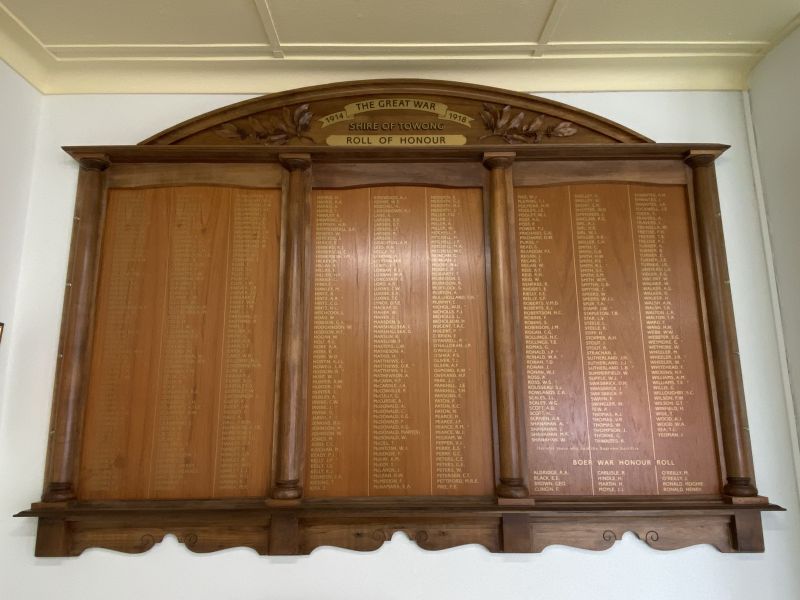William Douglas Nichol
Willie was born in 1893 at Tallangatta, Victoria. He was one of seven children to William Douglass and Margaret Stirling (née Sinclair) Nichol. Two of Willie’s siblings, John and Gladys, would both die at an early age. The Nichol family were farmers down the Tallangatta Valley, owning the property “Henlow Grange”. During his younger years Willie attended the Tallangatta Valley State School No. 2337.
It was on Wednesday the 16th of February, 1916, when Willie underwent his medical examination in Tallangatta for enlisting in the 1st AIF. It’s unsure whether he passed the first time as a note on his medical form states that on the 24th of February he was passed as medically fit to proceed to Seymour Camp. He was allotted the Regimental Number 5955, given the rank of private and allocated to the 16th Reinforcements for the 22nd Battalion. After a few months training at Seymour he was posted to Royal Park near Melbourne for a further four months.
The 22nd Battalion embarked on HMAT A71 Nestor at Melbourne on the 2nd of October, arriving at Plymouth, England on the 16th of November. While part of the 6th Training Battalion at Larkhill, he was admitted to Parkhouse Hospital on the 12th of December suffering from the mumps. Willie would have remained in hospital for about two weeks before rejoining his fellow reinforcements in the 6th at Rollstone on Salisbury Plain in Wiltshire.
After a further two months of training, Willie proceeded overseas to France via Southampton, arriving at the 2nd Australian Division Base Depot at Etaples, France. He was finally taken on strength with the 22nd Battalion on the 12th of June 1917. Willie arrived not long after the battalion had been in action at Bapaume. He marched along with the battalion as it moved to Beaulencourt where it formed the Divisional Reserve for the Corps in the front area.
An intense period of training was undertaken by the battalion, both at Beaulencourt and at its new home for six weeks in the village of Campagne. Between the 28th of July and the 12th of September Willie would have experienced a range of activities in a relatively quiet area. The battalion went through a rebuilding period of time, strengthening both muscle and mind. On the 12th of September the 22nd Battalion commenced its march towards the battlefield of Ypres.
The battalion marched via Ebblinghem to billets just outside Steenvoorde. On the 16th of September, after travelling by bus from Dominion Camp to Ypres, they took over the line from the 17th and 19th London Regiments, a sector on Westhoek Ridge.
The battalion’s War Diary describes the activities of the next 48 hours.
“Battalion remained in the line for 48 hours. During that time active patrolling was undertaken with a view to ascertaining as definitely as possible the exact disposition of the enemy, and his strength on the immediate front. The Patrols came into contact with the enemy on two occasions, and succeeded in obtaining valuable information.
One Prisoner of 19th R.I.R. was captured at J.8.a.9.3. Our positions were heavily shelled by the enemy, the practice barrages of our Artillery drawing heavy retaliation. The Battalion lost by Shell-fire the following casualties, viz.- 1 Officer killed, 20 O.R’s [other ranks] killed, and 49 O.R’s Wounded [sic].”
After 19 months of training, Willie was killed in action within the first 24 hours of him being at the front.
Willie’s remains were reinterred in the Hooge Crater Cemetery in Belgium on the 30th of June 1919. He is also remembered on the Australian War Memorial Roll of Honour, the Allans Flat Honour Board, the Tallangatta Valley War Memorial, the Towong Shire Boer War and WW1 Roll of Honour. For his service during the First World War, he was awarded the British War Medal and the Victory Medal.
 Stephen Learmonth
Stephen Learmonth